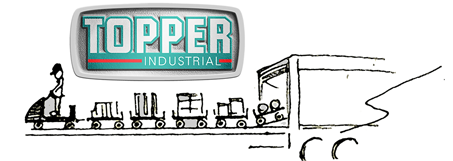Ralph Nader was not referring to fork trucks when he wrote Unsafe at Any Speed, the variable of the fork truck driver could have been analogous to the Corvair he described in detail. Excessive speed contributes to a significant number of fork lift truck accidents. Fork lift trucks are not designed to travel at speed. The steering and braking characteristics are different from many other types of vehicle. When used incorrectly, especially if traveling at excessive speeds, the truck may become unstable and shed its load, or even turn over.
Questions are often asked about maximum speeds. It is not possible to be specific. Different operations may mean that different limits should be used – 3 mph in racking – 5 mph in transit aisles – 10 mph in the yard. This will vary from business to business and location to location.
OSHA does not have specific speed limits set for the safe operation of a powered industrial truck. However, in determining what is a safe speed, OSHA would take a variety of factors into consideration. These factors include, but are not limited to, the type of truck itself, the manufacturer’s limitations on the truck, the load being carried, adequate stopping distances, operating surface conditions, pedestrian traffic, and other safety issues. While specific speed limits are not available, OSHA would consider the totality of the circumstances surrounding the operation of the powered industrial truck in determining whether safe travel speeds are practiced at a workplace. For additional assistance in determining safe travel speeds, an employer could look to consensus standards such as ASME B56.1-2000 Safety Standard for Low Lift and High Lift Trucks. For example, paragraph 4.3.2 of ASME B56.1 contains a Stopping Distance formula which may be useful in determining approximate theoretical stopping distances where certain variables are known. This information, along with other factors, can then be used to calculate a maximum safe speed.
Operations managers use certain guidelines to estimate the appropriate speed of fork trucks on the plant floor. Often, they carry out a risk assessment and determine the maximum speed(s) to be used. These suggested speeds are then communicated to the operators and use signs where appropriate.
More difficult is ensuring that the speed limits are enforced by managers and supervisors. There is no highway patrol to write speeding tickets on the plant floor. Even a sound system of sanctions, like “three strikes and you are out” is very difficult to monitor and manage. It also hurts employee engagement and morale.
There is equipment available that can physically control the speed of fork lift trucks but it adds cost and is readily resolved when using an AGV (Automated Guided Vehicle) and industrial carts. Some fork truck systems will allow different maximum speeds to be established in different zones.
The promise of these systems is they will “Stop Speeding Drivers.” The benefits they report include:
• Improve site safety
• Stop speeding drivers
• Improve driving standards
• Decrease damage
• Lower fuel expenditure
• Reduce maintenance costs
These speed limiters are comprehensive and highly reliable and have been fitted to over 1,000,000 vehicles worldwide. While these companies have conducted extensive research, and maintain a large database of truck data to design truck specific systems with extremely comprehensive installation instructions, the only sure fire way to assure speed limit compliance is moving to a Fork Truck Free (FTF) environment.
When pre-programmed, AGVs are implemented with industrial carts creating a FTF environments, the variability of drivers is removed.

Article by Jillian Burrow for Topper Industrial


No Comments Yet!
You can be first to comment this post!